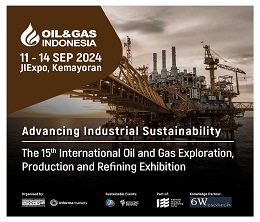Philippines Wool Market (2024-2030) | Outlook, Trends, Size, Analysis, Industry, Value, Companies, Forecast, Share, Revenue, Growth
Market Forecast By Source (Merino Wool, Peruvian Highland Wool, Teeswater Wool, Shetland Wool, Cashmere Wool, others), By Type (Fine wool (≤ 25 µ), Medium wool (25 to 35 μ), Coarse wool (≥ 35 µ)), By Application (Apparels, Interior Textiles) And Competitive Landscape
| Product Code: ETC236669 | Publication Date: Aug 2022 | Updated Date: May 2024 | Product Type: Market Research Report | |
| Publisher: 6Wresearch | No. of Pages: 75 | No. of Figures: 35 | No. of Tables: 20 | |
Philippines Wool Market Competition 2023
Philippines Wool market currently, in 2023, has witnessed an HHI of 3744, Which has decreased substantially as compared to the HHI of 10000 in 2017. The market is moving towards concentrated. Herfindahl index measures the competitiveness of exporting countries. The range lies from 0 to 10000, where a lower index number represents a larger number of players or exporting countries in the market while a large index number means fewer numbers of players or countries exporting in the market.
Philippines Wool Market Highlights
| Report Name | Philippines Wool Market |
| Forecast period | 2024-2030 |
| CAGR | 5.34% |
| Growing Sector | Fashion and Agriculture |
Topics Covered in the Philippines Wool Market
Philippines Wool Market report thoroughly covers the market by source, by type, and by application. The market outlook report provides an unbiased and detailed analysis of the ongoing market trends, opportunities/high growth areas, and market drivers which would help the stakeholders to devise and align their market strategies according to the current and future market dynamics.
Philippines Wool Market Synopsis
Philippines Wool Market has been expanding, owing to the country's strong economic growth and booming fashion industry. Generally, the bulk of the wool comes from countries such as Australia, New Zealand, South Africa, and the United Kingdom. Local retailers and manufacturers source wool from these countries, with Australia being the largest importer of raw wool to the Philippines.
According to 6Wresearch, the Philippines Wool Market size is expected to grow rapidly at a CAGR of 5.34% during the forecast period of 2024-2030. One of the key drivers of the wool market in the Philippines is the growing demand for raw materials in the country's textile industry. Local textile manufacturers rely on locally sourced wool to produce high-quality products for both the domestic and international market. Another significant driver is the increasing interest in eco-friendly and sustainable fibres. The use of wool, as opposed to synthetic fibres, has been shown to reduce greenhouse gas emissions and waste. The Philippines has long produced wool from its own native sheep breeds, such as the Philippine Native Sheep (PNS), which are indigenous breeds adapted to the country's tropical climate. However, imports from major players in the global market have increased in recent years. However, the local sheep and wool industry still has a long way to go when it comes to breeding, genetics, and animal husbandry. This has led to lower yields, less efficient production, and a shortage of high-quality wool. Another challenge hindering the Philippines Wool Market Growth is the lack of strong regulations when it comes to imports, which has resulted in lower quality wool coming into the country. Despite these challenges, there are still opportunities for growth in the wool industry in the Philippines. As more and more Filipino consumers become aware of the benefits of using natural, sustainable fibers, demand for locally produced wool is likely to increase. Moreover, there is a growing community of small-scale sheep farmers who are improving their husbandry practices to increase yields and enhance the quality of their wool.
Government policies and schemes introduced in the Philippines Wool Market
The government recognizes the potential of the Philippines wool industry to contribute to the country's economic growth. This resulted in the introduction of several initiatives aimed to support the growth and development of the sector. One of these is the Comprehensive Livestock Industry Development Program (CLIDP), which provides funding for research and development, as well as training and technical assistance for livestock farmers. Additionally, the Department of Agriculture launched the National Livestock Program, which aims to improve the productivity and profitability of the livestock industry, including the wool sector.
Key players in the Philippines Wool Market
Several players have emerged as key influencers in the Philippines Wool Market. One of these is the Philippine Fiber Industry Development Authority (PhilFIDA), which oversees the production, marketing, and exportation of wool and other natural fibers. Another prominent player is the Philippine Textile Research Institute (PTRI), which conducts research and development in the textile industry, including wool processing and clothing design.
Future insights of the Philippines Wool Market
The Philippines Wool Market is expected to experience significant growth in the coming years. This can be attributed to the increasing demand for eco-friendly and sustainable materials. With the government's recent initiatives and the contribution of key players in the sector, the wool industry can further improve its productivity and profitability. Moreover, the market can tap into a broader consumer base with the integration of technology and innovative approaches in production and marketing.
Market by Source
According to Swati, Senior Research Analyst, 6Wresearch, the Merino Wool has shown constant growth in the market owing to its fine texture, which makes it ideal for a variety of applications, such as clothing, blankets, and upholstery.
Market by Type
By Type, fine wool has been leading the Philippines Wool Market Share as this wool is suitable to produce high-quality clothing, luxury home textiles, and even high-end sporting gear.
Key Attractiveness of the Report
- 10 Years Market Numbers.
- Historical Data Starting from 2020 to 2023.
- Base Year: 2023.
- Forecast Data until 2030.
- Key Performance Indicators Impacting the Market.
- Major Upcoming Developments and Projects.
Key Highlights of the Report
- Philippines Wool Market Outlook
- Market Size of Philippines Wool Market, 2023
- Forecast of Philippines Wool Market, 2030
- Historical Data and Forecast of Philippines Wool Revenues & Volume for the Period 2020 - 2030
- Philippines Wool Market Trend Evolution
- Philippines Wool Market Drivers and Challenges
- Philippines Wool Price Trends
- Philippines Wool Porter's Five Forces
- Philippines Wool Industry Life Cycle
- Historical Data and Forecast of Philippines Wool Market Revenues & Volume By Source for the Period 2020 - 2030
- Historical Data and Forecast of Philippines Wool Market Revenues & Volume By Merino Wool for the Period 2020 - 2030
- Historical Data and Forecast of Philippines Wool Market Revenues & Volume By Peruvian Highland Wool for the Period 2020 - 2030
- Historical Data and Forecast of Philippines Wool Market Revenues & Volume By Teeswater Wool for the Period 2020 - 2030
- Historical Data and Forecast of Philippines Wool Market Revenues & Volume By Shetland Wool for the Period 2020 - 2030
- Historical Data and Forecast of Philippines Wool Market Revenues & Volume By Cashmere Wool for the Period 2020 - 2030
- Historical Data and Forecast of Philippines Wool Market Revenues & Volume By others for the Period 2020 - 2030
- Historical Data and Forecast of Philippines Wool Market Revenues & Volume By Type for the Period 2020 - 2030
- Historical Data and Forecast of Philippines Wool Market Revenues & Volume By Fine wool for the Period 2020 - 2030
- Historical Data and Forecast of Philippines Wool Market Revenues & Volume By Medium wool for the Period 2020 - 2030
- Historical Data and Forecast of Philippines Wool Market Revenues & Volume By Coarse wool for the Period 2020 - 2030
- Historical Data and Forecast of Philippines Wool Market Revenues & Volume By Application for the Period 2020 - 2030
- Historical Data and Forecast of Philippines Wool Market Revenues & Volume By Apparels for the Period 2020 - 2030
- Historical Data and Forecast of Philippines Wool Market Revenues & Volume By Interior Textiles for the Period 2020 - 2030
- Philippines Wool Import Export Trade Statistics
- Market Opportunity Assessment By Source
- Market Opportunity Assessment By Type
- Market Opportunity Assessment By Application
- Philippines Wool Top Companies Market Share
- Philippines Wool Competitive Benchmarking By Technical and Operational Parameters
- Philippines Wool Company Profiles
- Philippines Wool Key Strategic Recommendations
Market Covered
The report offers a comprehensive study of the subsequent market segments:
By Source
- Merino Wool
- Peruvian Highland Wool
- Teeswater Wool
- Shetland Wool
- Cashmere Wool
- Others
By Type
- Fine Wool
- Medium Wool
- Coarse Wool
By Application
- Apparels
- Interior Textiles
Philippines Wool Market (2024-2030): FAQs
| 1 Executive Summary |
| 2 Introduction |
| 2.1 Key Highlights of the Report |
| 2.2 Report Description |
| 2.3 Market Scope & Segmentation |
| 2.4 Research Methodology |
| 2.5 Assumptions |
| 3 Philippines Wool Market Overview |
| 3.1 Philippines Country Macro Economic Indicators |
| 3.2 Philippines Wool Market Revenues & Volume, 2020 & 2030F |
| 3.3 Philippines Wool Market - Industry Life Cycle |
| 3.4 Philippines Wool Market - Porter's Five Forces |
| 3.5 Philippines Wool Market Revenues & Volume Share, By Source, 2020 & 2030F |
| 3.6 Philippines Wool Market Revenues & Volume Share, By Type, 2020 & 2030F |
| 3.7 Philippines Wool Market Revenues & Volume Share, By Application, 2020 & 2030F |
| 4 Philippines Wool Market Dynamics |
| 4.1 Impact Analysis |
| 4.2 Market Drivers |
| 4.3 Market Restraints |
| 5 Philippines Wool Market Trends |
| 6 Philippines Wool Market, By Types |
| 6.1 Philippines Wool Market, By Source |
| 6.1.1 Overview and Analysis |
| 6.1.2 Philippines Wool Market Revenues & Volume, By Source, 2020 - 2030F |
| 6.1.3 Philippines Wool Market Revenues & Volume, By Merino Wool, 2020 - 2030F |
| 6.1.4 Philippines Wool Market Revenues & Volume, By Peruvian Highland Wool, 2020 - 2030F |
| 6.1.5 Philippines Wool Market Revenues & Volume, By Teeswater Wool, 2020 - 2030F |
| 6.1.6 Philippines Wool Market Revenues & Volume, By Shetland Wool, 2020 - 2030F |
| 6.1.7 Philippines Wool Market Revenues & Volume, By Cashmere Wool, 2020 - 2030F |
| 6.1.8 Philippines Wool Market Revenues & Volume, By others, 2020 - 2030F |
| 6.2 Philippines Wool Market, By Type |
| 6.2.1 Overview and Analysis |
| 6.2.2 Philippines Wool Market Revenues & Volume, By Fine wool (â?¤ 25 µ), 2020 - 2030F |
| 6.2.3 Philippines Wool Market Revenues & Volume, By Medium wool (25 to 35 ¼), 2020 - 2030F |
| 6.2.4 Philippines Wool Market Revenues & Volume, By Coarse wool (â?¥ 35 µ), 2020 - 2030F |
| 6.3 Philippines Wool Market, By Application |
| 6.3.1 Overview and Analysis |
| 6.3.2 Philippines Wool Market Revenues & Volume, By Apparels, 2020 - 2030F |
| 6.3.3 Philippines Wool Market Revenues & Volume, By Interior Textiles, 2020 - 2030F |
| 7 Philippines Wool Market Import-Export Trade Statistics |
| 7.1 Philippines Wool Market Export to Major Countries |
| 7.2 Philippines Wool Market Imports from Major Countries |
| 8 Philippines Wool Market Key Performance Indicators |
| 9 Philippines Wool Market - Opportunity Assessment |
| 9.1 Philippines Wool Market Opportunity Assessment, By Source, 2020 & 2030F |
| 9.2 Philippines Wool Market Opportunity Assessment, By Type, 2020 & 2030F |
| 9.3 Philippines Wool Market Opportunity Assessment, By Application, 2020 & 2030F |
| 10 Philippines Wool Market - Competitive Landscape |
| 10.1 Philippines Wool Market Revenue Share, By Companies, 2023 |
| 10.2 Philippines Wool Market Competitive Benchmarking, By Operating and Technical Parameters |
| 11 Company Profiles |
| 12 Recommendations |
| 13 Disclaimer |
- Single User License$ 1,995
- Department License$ 2,400
- Site License$ 3,120
- Global License$ 3,795
Search
Related Reports
- India Video Surveillance Market (2024-2030) | Size, industry, Share, Trends, Revenue, Analysis, Forecast, Growth, Value, Outlook
- India Air Conditioner (AC) Market (2024-2030) | Share, Size, Growth, Industry, Segmentation, Trends, Value, Revenue, Analysis & Outlook
- Poland Printing Market (2024-2030) | Trends, Companies, Share, Industry, Value, Growth, Analysis, Outlook, Forecast, Size & Revenue
- Argentina Data storage devices Market (2024-2030) | Size, Share, Industry, Trends, Growth, Value, Revenue, Analysis & Outlook
- UAE Cyber Security Market (2024-2030) | industry, Size, Share, Revenue, Analysis, Forecast, Growth, Trends & Outlook
- Professional Headset Market (2024-2030) | Companies, Outlook, Trends, Value, Forecast, Size, Analysis, Share, Growth, Revenue & Industry
- Polyurethane Market (2024-2030) | Trends, Companies, Analysis, Size, Share, Industry, Revenue, Outlook, Forecast, Value & Growth
- Orphan Drugs Market (2024-2030) | Outlook, Revenue, Value, Companies, Analysis, Size, Share, Forecast, Industry, Growth & Trends
- Military Robotic and Autonomous (RAS) Systems Market (2024-2030) | Outlook, Size, Forecast, Value, Trends, Growth, Industry, Analysis, Revenue, Share & Companies
- Infectious Disease Point-of-Care Testing Market (2024-2030) | Share, Revenue, Growth, Forecast, Analysis, Trends, Value, Companies, Industry, Outlook, Size
Industry Events and Analyst Meet
Our Clients
Whitepaper
- Middle East & Africa Commercial Security Market Click here to view more.
- Middle East & Africa Fire Safety Systems & Equipment Market Click here to view more.
- GCC Drone Market Click here to view more.
- Middle East Lighting Fixture Market Click here to view more.
- GCC Physical & Perimeter Security Market Click here to view more.
6WResearch In News
- India's Printer Market Faces 20.7% Decline in Q4 2023: Epson and HP Lead Amidst Downturn
- India's Camera Market Sees 8.9% Decline in Q4 2023; Canon Leads with 38.4% Share
- Doha a strategic location for EV manufacturing hub: IPA Qatar
- Demand for luxury TVs surging in the GCC, says Samsung
- Empowering Growth: The Thriving Journey of Bangladesh’s Cable Industry
- The future of gaming industry in the Philippines













